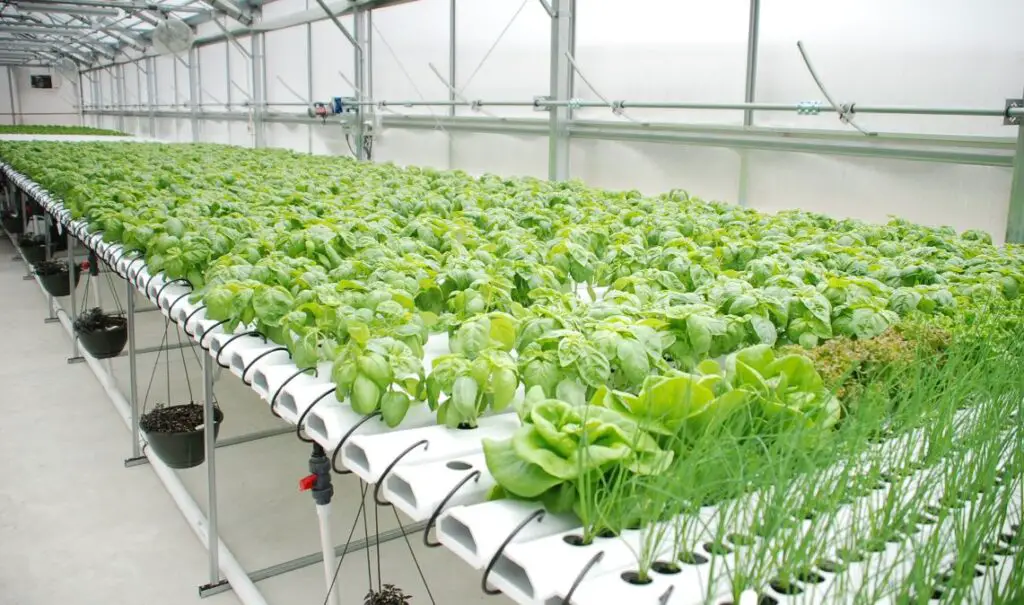- Africa needs to reinvent its agricultural practices to help its people survive the impact of climate change.
- Hydroponic farming has the potential to transform the output of agriculture in Africa.
- hydroponics can be used to grow a variety of crops, including fruits and vegetables, in a much shorter time frame than conventional farming.
Hydroponic farming has the potential to revolutionize agriculture in Africa and provide a sustainable, efficient method of food production for the continent. Hydroponic farming is a type of agriculture that does not use soil, but instead uses water with added nutrients to grow plants. This technology is becoming increasingly popular around the world and has the potential to revolutionize the way food is produced in Africa.
There are several key benefits of hydroponic farming in Africa, such as increased food security, lower water usage, and higher yields. Hydroponics requires significantly less water than conventional farming, making it a viable option for areas with limited water resources.
Additionally, hydroponics can be used to grow a variety of crops, including fruits and vegetables, in a much shorter time frame than conventional farming. This means that farmers can have more reliable harvests, resulting in increased food security. Furthermore, hydroponics can reduce the cost of growing produce, as it requires less land and labor, and is more efficient in terms of water usage and energy consumption.
Hydroponic farming is also more resilient to climate change, as it is not dependent on rainfall or soil quality. This means that farmers can produce food even in areas that are prone to drought or have poor soil
Which countries in Africa are exploiting hydroponic farming?
Hydroponic farming is becoming increasingly popular in many African countries, such as Kenya, Uganda, Tanzania, Rwanda, Ethiopia, Ghana, and South Africa. In Kenya, hydroponic farming has been used to produce high-value crops such as tomatoes, cucumbers, and capsicums. In Uganda, hydroponic farming is being used to produce tomatoes, spinach, lettuce, and peppers. In Tanzania, hydroponic farming is being used to grow tomatoes, capsicum, and cucumbers. In Rwanda, hydroponic farming is being used to produce tomatoes, lettuce, and capsicums. In Ethiopia, hydroponic farming is being used to produce tomatoes, spinach, peppers, and cucumbers. In Ghana, hydroponic farming is being used to produce tomatoes and cucumbers. Finally, in South Africa, hydroponic farming is being used to produce tomatoes, lettuce, and peppers.
How to set up a hydroponics farm
Hydroponics is an increasingly popular method of farming, and it is being used to great effect in many countries across Africa. Setting up a hydroponics farm in Africa is a challenging endeavor, but with the right knowledge and resources, it can be done. Here are some tips to help you get started.
- Choose the Right Location: The first step to setting up a hydroponics farm in Africa is finding the right location. Look for areas with access to plenty of sunlight, good soil, and a steady supply of water.
- Invest in Quality Equipment: Investing in quality equipment is essential for setting up a successful hydroponics farm. Look for equipment that is designed specifically for hydroponic farming, as it will be more efficient and help you save money in the long run.
- Develop a Nutrient Solution: Developing a nutrient solution is essential for a successful hydroponics farm. Nutrient solutions are tailored to the specific needs of the plants you are growing, so make sure to research the right ingredients for the plants you are growing.
- Monitor Temperature and pH: Monitoring temperature and pH is essential for a successful hydroponics farm. It is important to monitor the temperature of the water, as well as the pH of the nutrient solution, on a regular basis. Make sure to adjust the temperature and pH levels as needed to ensure that the plants are getting the right environment for optimal growth.
- Maintain the System: Maintaining the hydroponics system is essential for a successful hydroponics farm. Make sure to regularly clean and replace the water, as well as check the nutrient levels in the system. Additionally, inspect the plants regularly to make sure they are healthy and free from pests and diseases.By following these steps, you can successfully set up a hydroponics farm in Africa. With the right knowledge, resources, and dedication, you can create a thriving hydroponics farm that produces high-quality, nutritious crops.
Challenges faced by African Agriculture
Africa is a continent of immense potential and great promise, but it is also plagued by a number of challenges, particularly in the agricultural sector. Over the years, the agriculture industry in Africa has been plagued by a number of issues and challenges, including a lack of access to resources, outdated technology, a lack of investment and innovation, and a lack of access to markets. These challenges have made it difficult for African farmers and agricultural businesses to succeed, and have hindered the continent’s potential for economic growth.
One of the biggest challenges African agriculture faces is a lack of access to resources. Many small farmers lack access to land, water, credit, and other essential resources needed to produce food and other agricultural products. Without access to these resources, it can be difficult for farmers to make a living and succeed in their operations.
Furthermore, investment and innovation are also major challenges facing African agriculture. Many African countries lack the financial resources to invest in agricultural research and development, which is essential for the growth of the industry. Furthermore, there is a lack of innovation in the sector, with many farmers using outdated practices and technologies. This lack of investment and innovation has hindered the development of African agriculture and has limited the sector’s potential to contribute to economic growth.
Finally, African farmers also face a lack of access to markets. Many African countries lack efficient transportation networks and infrastructure, which makes it difficult for farmers to reach markets and sell their products. Furthermore, due to limited market access, African farmers are often unable to get a fair price for their products and are often forced to sell them at a lower price than their competitors.
The challenges facing African agriculture are immense, but with the right investments and policies, the continent can make significant progress. Governments must invest in infrastructure, research, and development to make it easier for farmers to access resources and markets. Additionally, governments must ensure that farmers are able to get a fair price for their products and create policies that encourage innovation and investment in the sector.
In order to overcome these challenges, African governments must collaborate with the private sector and civil society to develop policies that foster investment in the agricultural sector and create an enabling environment for innovation. Additionally, governments should focus on improving access to resources and markets, as well as investing in infrastructure. Finally, public-private partnerships should be established to ensure that African farmers are able to access the latest technologies and innovations, as well as get a fair price for their products. With the right investments and policies, African agriculture can become a major contributor to economic growth and development on the continent.
Current status of African Agriculture
African agriculture is experiencing a period of rapid change and transformation. In recent years, technological advances and improved access to markets have enabled African farmers to increase yields and raise their income levels. However, the majority of African farmers still struggle to make a living due to limited access to resources, land, and capital.
In order to address these issues, African governments have implemented a range of initiatives to promote agricultural development, such as the African Union’s Comprehensive Africa Agriculture Development Program (CAADP). This program seeks to promote agricultural productivity, reduce poverty, and improve food security throughout the continent.
In addition to CAADP, other programs have been implemented to support African agriculture. For example, the Alliance for a Green Revolution in Africa (AGRA) has provided funding and technical assistance to African farmers, and has helped to increase access to improved crop varieties, fertilizer, and other inputs. The New Alliance for Food Security and Nutrition (NAFSN) is another program that has provided African farmers with access to improved agricultural inputs and technologies.
The current status of African agriculture is mixed. But, on one hand, there have been some successes: yields of major staple crops have increased significantly, and access to markets has improved.




